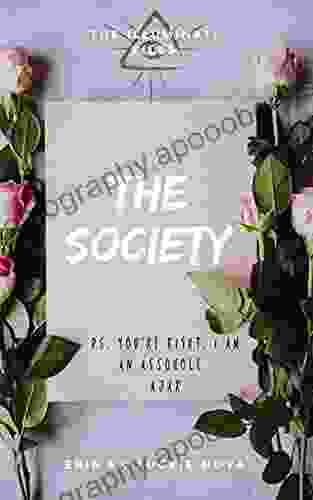Do You See What You See? Exploring the Hidden World of Optical Illusions

4.2 out of 5
| Language | : | English |
| File size | : | 1391 KB |
| Text-to-Speech | : | Enabled |
| Screen Reader | : | Supported |
| Enhanced typesetting | : | Enabled |
| Word Wise | : | Enabled |
| Print length | : | 106 pages |
| Lending | : | Enabled |
Optical illusions are fascinating visual phenomena that trick our brains into seeing things that aren't there or distorting what we do see. They've been around for centuries, and they've been used in art, psychology, and even advertising. But what exactly are optical illusions, and how do they work?
Optical illusions are created when our brains make mistakes in interpreting the visual information that our eyes send them. These mistakes can be caused by a variety of factors, including the way our eyes and brains work together, the context in which we see an object, and even our expectations.
There are many different types of optical illusions, each of which exploits a different quirk of visual perception. Some of the most common types of optical illusions include:
- Geometric illusions: These illusions involve geometric shapes that appear to be distorted or impossible. For example, the famous "checker shadow illusion" shows two squares that appear to be different colors, even though they're actually the same color.
- Motion illusions: These illusions involve moving objects that appear to be moving in a different direction than they actually are. For example, the "spinning dancer illusion" shows a woman who appears to be spinning clockwise or counterclockwise, depending on how you look at her.
- Color illusions: These illusions involve colors that appear to be different than they actually are. For example, the "simultaneous contrast illusion" shows two squares that appear to be different colors, even though they're actually the same color.
Optical illusions can be a lot of fun, but they can also be used to teach us about how our brains work. By understanding how optical illusions work, we can learn more about the way our brains process visual information and how we perceive the world around us.
The Science Behind Optical Illusions
Optical illusions are caused by a variety of factors, including the way our eyes and brains work together, the context in which we see an object, and even our expectations.
Our eyes are responsible for sending visual information to our brains. This information is then processed by our brains, which create a mental image of the world around us. However, our brains are not always perfect at interpreting this information, and this can lead to optical illusions.
The context in which we see an object can also affect how we perceive it. For example, the "Ebbinghaus illusion" shows two circles that appear to be different sizes, even though they're actually the same size. This illusion is caused by the context of the circles: the circle that is surrounded by larger circles appears to be smaller, while the circle that is surrounded by smaller circles appears to be larger.
Our expectations can also affect how we perceive optical illusions. For example, the "Müller-Lyer illusion" shows two lines that appear to be different lengths, even though they're actually the same length. This illusion is caused by our expectations: we expect the line that has inward-facing arrows at the ends to be shorter than the line that has outward-facing arrows at the ends.
Optical Illusions in Art, Psychology, and Visual Culture
Optical illusions have been used in art, psychology, and visual culture for centuries. In art, optical illusions have been used to create stunning and thought-provoking images. For example, the famous artist M.C. Escher used optical illusions to create impossible worlds and objects.
In psychology, optical illusions have been used to study how the brain processes visual information. For example, the "Gestalt illusion" shows a series of shapes that appear to be organized into a whole, even though they're actually just a collection of individual shapes. This illusion is caused by the way our brains group objects together.
In visual culture, optical illusions have been used to create everything from advertising campaigns to movie special effects. For example, the "Pepper's ghost illusion" is a type of optical illusion that is used to create the illusion of a ghost appearing on stage. This illusion is created by using a mirror and a piece of glass to reflect an image.
Do You See What You See?
Optical illusions are fascinating visual phenomena that can teach us a lot about how our brains work. By understanding how optical illusions work, we can learn more about the way we perceive the world around us.
If you're interested in learning more about optical illusions, I highly recommend reading the book "Do You See What You See?" by Richard Gregory. This book is a comprehensive guide to the world of optical illusions, and it's full of fascinating insights into how our brains work.
Free Download your copy of "Do You See What You See?" today and embark on an extraordinary journey into the realms of illusion.
4.2 out of 5
| Language | : | English |
| File size | : | 1391 KB |
| Text-to-Speech | : | Enabled |
| Screen Reader | : | Supported |
| Enhanced typesetting | : | Enabled |
| Word Wise | : | Enabled |
| Print length | : | 106 pages |
| Lending | : | Enabled |
Do you want to contribute by writing guest posts on this blog?
Please contact us and send us a resume of previous articles that you have written.
 Book
Book Novel
Novel Page
Page Chapter
Chapter Text
Text Story
Story Genre
Genre Reader
Reader Library
Library Paperback
Paperback E-book
E-book Magazine
Magazine Newspaper
Newspaper Paragraph
Paragraph Sentence
Sentence Bookmark
Bookmark Shelf
Shelf Glossary
Glossary Bibliography
Bibliography Foreword
Foreword Preface
Preface Synopsis
Synopsis Annotation
Annotation Footnote
Footnote Manuscript
Manuscript Scroll
Scroll Codex
Codex Tome
Tome Bestseller
Bestseller Classics
Classics Library card
Library card Narrative
Narrative Biography
Biography Autobiography
Autobiography Memoir
Memoir Reference
Reference Encyclopedia
Encyclopedia Christian Jacq
Christian Jacq Ray Lahood
Ray Lahood Aiden Warren
Aiden Warren Alan L Mcpherson
Alan L Mcpherson H P Lovecraft
H P Lovecraft Serge Elie Seropian
Serge Elie Seropian Saumya Dave
Saumya Dave Xolani Kacela
Xolani Kacela Alan G Heath
Alan G Heath Sarah Pickard
Sarah Pickard Allen Rubin
Allen Rubin Smithsonian Institution Herausgeber
Smithsonian Institution Herausgeber Alba Luz Morazan
Alba Luz Morazan Sue Lyndon
Sue Lyndon Alastair Turnbull
Alastair Turnbull Peter Sloterdijk
Peter Sloterdijk Charles Dickens
Charles Dickens Andrew Henderson
Andrew Henderson Alan Pritchard
Alan Pritchard Alan Charles Kors
Alan Charles Kors
Light bulbAdvertise smarter! Our strategic ad space ensures maximum exposure. Reserve your spot today!

 Arthur C. ClarkeEncanto Music From The Motion Picture Soundtrack: A Magical Journey into the...
Arthur C. ClarkeEncanto Music From The Motion Picture Soundtrack: A Magical Journey into the... Nick TurnerFollow ·3.2k
Nick TurnerFollow ·3.2k Andy HayesFollow ·19.3k
Andy HayesFollow ·19.3k Zadie SmithFollow ·13.4k
Zadie SmithFollow ·13.4k Mario SimmonsFollow ·4.3k
Mario SimmonsFollow ·4.3k David Foster WallaceFollow ·16.9k
David Foster WallaceFollow ·16.9k Raymond ChandlerFollow ·19.3k
Raymond ChandlerFollow ·19.3k Bo CoxFollow ·11.2k
Bo CoxFollow ·11.2k Billy FosterFollow ·17k
Billy FosterFollow ·17k

 W. Somerset Maugham
W. Somerset MaughamBach Dialogue With Modernity: A Journey Through Time and...
Prelude: Bach's Timeless...

 Ted Simmons
Ted SimmonsAsher Heroes At Heart Maryann Jordan: The Essential Guide...
Are you ready to...

 Paulo Coelho
Paulo CoelhoVienna Spies: Uncover the Hidden World of Espionage in...
Vienna has long...

 Herman Melville
Herman MelvilleThe Complete Guide to Orchestral Cymbal Playing:...
Step into the vibrant...

 Rubén Darío
Rubén DaríoEscape into a Holiday Haven with California Christmas...
Embark on a heartwarming and festive journey...
4.2 out of 5
| Language | : | English |
| File size | : | 1391 KB |
| Text-to-Speech | : | Enabled |
| Screen Reader | : | Supported |
| Enhanced typesetting | : | Enabled |
| Word Wise | : | Enabled |
| Print length | : | 106 pages |
| Lending | : | Enabled |












